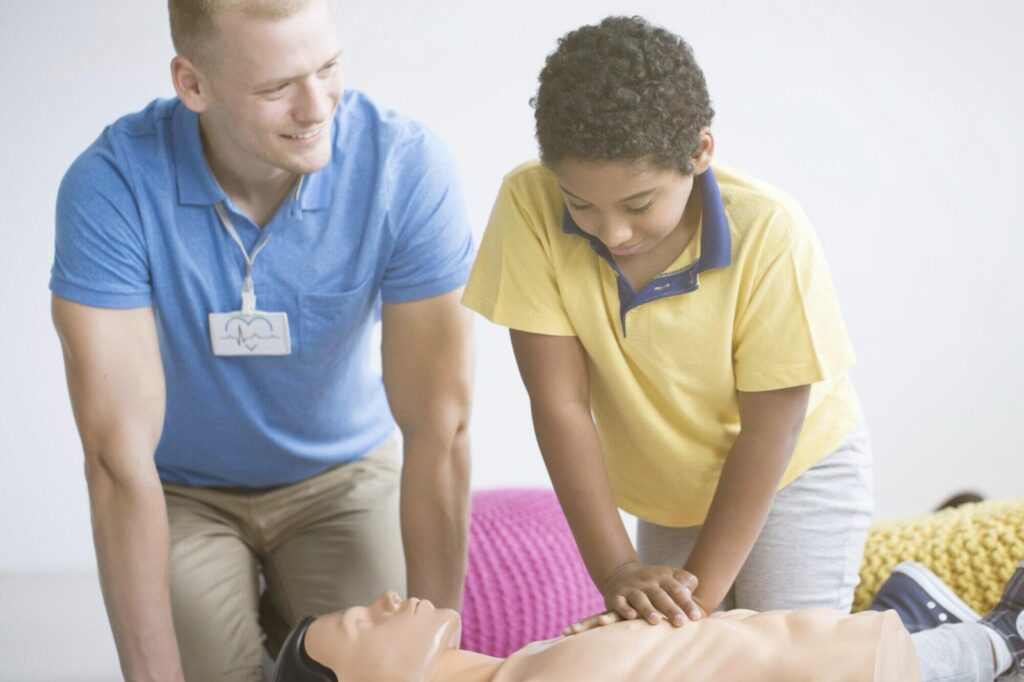Have you ever wondered what could happen if you’re the first responder during a life-threatening situation at the pool or beach? When you’re working a lifeguard job, you have the power to save lives, but only if you’re properly prepared.
Learning Basic Life Support (BLS) is one of the most crucial skills you can have as a lifeguard. In this blog post, we’ll show you why this training is a must-have, and how it will make you more effective and confident on the job. Keep on reading!
Understanding Basic Life Support (BLS)
Basic Life Support (BLS) is a set of lifesaving techniques, including cardiopulmonary resuscitation (CPR), to help someone unresponsive or not breathing. As a lifeguard, it’s vital to know these skills, because they can make a difference in an emergency.
BLS teaches you how to assess the situation and act quickly, which is key in drowning accidents or other health emergencies. With BLS training, you’ll feel prepared to provide immediate action when it matters most.
Quick Response to Emergencies
When someone’s life is at risk, every second counts. Lifeguards are trained to respond rapidly, and BLS skills help you act quickly and effectively.
CPR and other BLS techniques can stabilize someone until medical professionals arrive. In cases of drowning accidents, having BLS knowledge could save someone’s life during that critical window before emergency services can reach the scene.
The Importance of Cardiopulmonary Resuscitation (CPR)
CPR is a core component of Basic Life Support and is essential for lifeguards to master. If someone stops breathing or their heart stops beating, CPR can help restore circulation and breathing.
As a lifeguard, you’re often in the best position to perform CPR on someone who is drowning or suffering from other emergencies. Knowing how to give chest compressions and mouth-to-mouth resuscitation can make a lifesaving difference.
Professional Responsibility as a Lifeguard
Being a lifeguard is more than just watching over swimmers; it’s a professional responsibility to ensure their safety. BLS is part of that responsibility.
When you are trained in these techniques, you’re showing commitment to your role. You’re ready to handle emergencies with confidence and professionalism, which makes you an even more valuable asset to your team and to the people you protect.
Preventing Drowning Accidents
Drowning accidents are among the most common emergencies lifeguards face. Knowing BLS can help you prevent a tragedy from escalating.
Quick action, including performing CPR and other emergency techniques, can greatly improve survival rates. The ability to recognize when someone is struggling in the water and act immediately is crucial to keeping swimmers safe.
Training and Certification
Getting certified in Basic Life Support is easy and can be done in a short amount of time. It’s a wise investment for anyone in a lifeguard job.
Certification not only boosts your skill set but also shows employers that you’re dedicated to your role. You can find great courses online, such as this one: https://cprcertificationnow.com/products/bls-certification, to get certified today and be ready for any emergency.
Essential Skills for Your Lifeguard Job
In any lifeguard job, being trained in Basic Life Support is not optional; it’s essential. Knowing how to perform CPR and take immediate action can save lives.
As a lifeguard, you’re more than just a lifeguard when you master BLS. You become a true protector who is prepared for anything.
Did you like this guide? Great! Browse our website for more!


